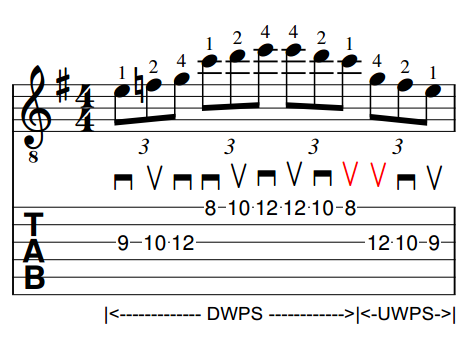Hi folks.
I’m just getting started with string skipping and would appreciate some recommendations for any good beginners’ exercises which would help me get up and running as quickly as possible; ideally some melodic phrases which are more fun to play and that I can incorporate into my improvisations and solos.
After watching the CtC videos and reading posts on the forum, I’ve come up with the following 3NPS string skipping pattern which is very loosely based on Nuno Bettencourt’s solo from (It’s a) Monster.
I’ve only shown the basic pattern, but I repeat this phrase descending the neck one fret at a time:

I appreciate that there may be easier ways of playing this by including hammer ons and pull offs, but I’m trying to avoid doing this to really concentrate on my right hand picking technique.
I’m finding that if I play it as shown, the downward skip from G to E string comes fairly easily; but the tricky bit is the upward sweep / skip from E string back to the G string (shown in red). I’m trying to navigate this by briefly switching from downward pick slanting (DWPS) to upward pick slanting (UWPS). as I skip over the B string.
Being a die hard DWPS player previously, pronating and supinating my wrist with each phrase feels unnatural; but this may just reflect my unfamiliarity with this technique.
Am I on the right lines here, or would a different approach be faster / more economical?
I’d be grateful for your advice and feedback . Best wishes.


